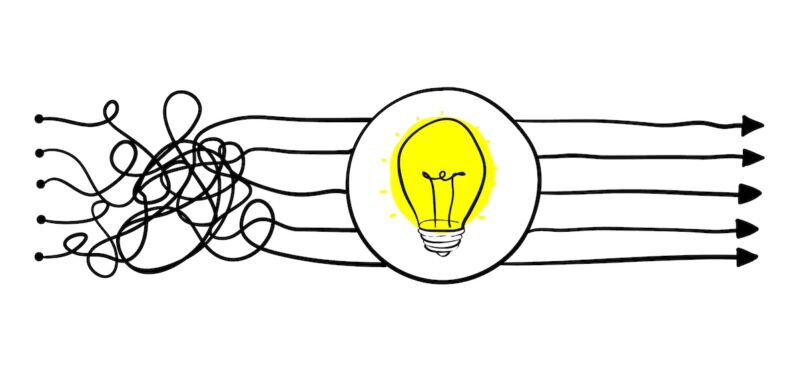Do you know what is expected of you at work?
It’s the first and foundational question of the Gallup Q12 measure of engagement. And there is a reason for it: clear expectations are the cornerstone upon which everything else is built. Understanding what’s expected of us is vital for happiness, personal fulfilment, and productivity. Yet, a surprising number of organisations fall short of effectively communicating expectations to their teams.
You want every team member to finish their day with a resolute sense of achievement. To do this, clarity is essential – understanding the ‘game’ they’re playing, the rules they’re following and where the white lines are on the field. And, they need to know their score in real time. This makes such a difference. People don’t get up every morning thinking about going to work to do a sh*tty job. In my opinion, most will want to perform well and deliver good results. But to do that, they need to clearly understand what good looks like.
It might sound strikingly obvious, yet it’s astonishing how often people adopt a purely reactive stance in their professional roles. They arrive at their desks and immediately tackle the first task that pops up, or they might find themselves engrossed in tasks that merely keep them busy.
This pattern often stems from a lack of clarity on what is actually expected of them. Once, I was chatting with a guy who worked at a large corporation. He was told he was a B Player during his latest annual appraisal. The reason? He had not met his manager’s expectations. Yet, what’s truly remarkable is that at no point during the entire year had he been provided with a clear outline of what these were.
So, what can you do to ensure clear expectations for every team member?
Educate your managers

When delegating tasks, there’s a common assumption that the team member possesses as much knowledge as you do or that the individual will approach the task the same way they would.
There are two expectations at play here. The first is about the result. The second is about how you get to the result. It’s much more important to focus on the first. How we land on a result shouldn’t matter – each of us should be able to achieve the outcome in our own way. Here, we’re dealing with two sets of expectations: one concerning the outcome and the other regarding the path taken to achieve this outcome. The emphasis ought to be primarily on the former. The method of reaching the desired result should be flexible, allowing each individual to navigate towards the outcome uniquely. This flexibility and trust in your team’s diversity of thought can foster a more innovative and responsive work environment.
That’s why I’m a big fan of tools like Working Genius and CliftonStrengths from Gallup. As the manager discusses objectives with a team member, they have a practical framework for defining goals and tracking progress. Knowing their team member’s strengths enables a manager to look at a challenge and say, ‘This is how I would tackle it, but I know you will tackle it differently, according to your strengths. I can’t tell you what to do.’ They can then agree on an objective and discuss the different ways of tackling it.
Acknowledge the diversity in expectations
‘Good’ doesn’t look the same for everyone. We all have different standards. So, it’s fundamental to recognise this. Your manager, your colleague, and your business each hold distinct expectations. Discrepancies among these often result in disappointment, which can escalate to frustration and negativity, both detrimental to a business environment. Therefore, it’s crucial to actively seek clarity and ensure everyone’s understanding aligns to mitigate the risks.
We perceive the world through lenses uniquely shaped by our identity, origins, upbringing, and past experiences. It’s a common misconception to look in the mirror and assume everyone else reflects our image and perspective. This simply isn’t the case. Our view of the world is profoundly personal, as is how we respond to and manage situations. Recognising this diversity in perception and reaction is crucial for understanding and interacting effectively with others.
Define the expected behaviours
Core values, and the behaviours they inspire, are pivotal in cultivating a high-performance culture. Dedicate some time to define how you expect your team to behave and interact with each other. Clarity on the true meaning of your values is crucial; they should establish your organisation’s distinctive language – the terms you use to discuss the positives and negatives on a daily basis.
Values enable individual employees to assess their own behaviour and progress and understand their contribution. It shouldn’t be up to the managers to tell them whether they’ve done well or poorly. On a Friday at 6pm, they should know if they’ve had a good or bad week. Then, it’s the manager’s role to discuss how they can help them improve.
Everywhere I’ve worked before, we’ve always integrated our values directly into our appraisal processes, focusing on behaviours rather than just outcomes. And let me clarify: we’re not talking about yearly reviews here. If you’ve read any of my previous articles, you’ll know about my aversion to anything that’s only addressed annually. Instead, I advocate for quarterly performance evaluations, where team members assess themselves. They can straightforwardly showcase their achievements, exemplify how they’ve embodied the company’s values through their actions, and self-rate using an A, B, or C scale.
Introducing a leadership development framework that aligns with these core values and offers a transparent route for development is invaluable. This approach is critical to managing expectations effectively.
Get clear on performance expectations

Individual Key Performance Indicators (KPIs) play a fundamental role in establishing explicit expectations, allowing team members to operate autonomously within an optimally structured environment. Use a job analysis template to determine these KPIs for every team member. Identify the top three to five tasks for each role that significantly contribute to the business’s success. Track these as a regular part of your daily huddles so that, at the end of each day, employees can see how they’ve moved the needle forward in a positive way.
Use OKRs to manage organisational expectations
I’m a big fan of OKRs—Objectives and Key Results. They pinpoint the ‘Who, What, and When’, offering crystal clear visibility on who’s accountable and what the delivery targets are. Whether they’re timed or centred around specific activities, OKRs effectively chart progress towards achieving a goal.
To demonstrate how effective they are, I often compare OKRs to setting personal fitness goals. Imagine you’ve decided to get in shape. Without a concrete plan, it’s unlikely you’ll achieve this. ‘Being fit’ means something different to everyone, reflecting our personal benchmarks of success. So, you need to specify your ultimate aim and the milestones you’ll need to hit along the way. Let’s say your goal is to run a marathon. Then, ask yourself: By when? Perhaps in two years? That’s fine, but what’s your target time to finish the marathon? If you decide to complete it within five hours, then you’ve set a clear target and can begin to outline your plan to achieve it.
First, you have to work out your starting point. This is unique to you. You may be an avid runner already, or you may be a couch potato. It’s important to set realistic expectations for yourself. You aim to complete the marathon in five hours, yet finishing in four would be outstanding. Completing it in six hours is still acceptable, but anything beyond that would be considered a significant setback. Remember, your goal isn’t fixed; it can evolve based on progress. Your strategy will include milestones to gauge improvements in your pace at each stage. Sharing these updates with your trainer allows you to celebrate successes or make adjustments as needed to stay on track.
In this way, OKRs will clarify organisational expectations like nothing else. Everyone will know where they’re heading, how quickly they will get there and their score in real time.
Stop the annual rhythms. Start a quarterly cycle
I mentioned this earlier, but let me repeat it: I don’t think annual rhythms work. Adopting a quarterly cycle is significantly more efficient for performance development and goal-setting. My experience consistently shows that a 90-day framework fosters better alignment within a business. The connection between daily activities and the overarching quarterly objectives becomes clearer, as it’s easier to relate to and understand goals within a nearer horizon. Envision having weekly check-ins that resemble updates on a ‘Blue Peter totaliser’ instead of engaging in a year-long effort only to learn the outcomes long after the efforts have ceased. This approach encourages immediate feedback and adjustments, keeping objectives in sharp focus.
Think about the marathon example earlier. If you’ve never trained for a marathon before, the initial 30 days might involve a bit of trial and error as you figure things out. A couple of months in, you may find the need to adjust your plans, depending on whether your progress is above or below expectations. By the 90-day mark, it’s a good time to evaluate whether your original goal still seems attainable. As the military says, no plan survives first contact.
This principle highlights a fundamental shortcoming of annual goals: the lack of opportunity for timely adjustments. As you wouldn’t hire a personal trainer and meet with them only once a year, setting goals should involve more frequent checkpoints and adjustments.
Get your expectations written down and celebrate success

Getting things written down can be helpful. A goal not written down is just a dream, not a plan. You need to approach tasks with precision. I recommend urging all managers to record their expectations and those of their team members formally. It’s impossible to know what people are thinking if it’s in their heads and not on paper. Making these expectations tangible on paper ensures clarity and alignment within the team.
Written expectations will ensure mutual understanding. This practice offers people a clear insight and fosters a sense of dedication towards their responsibilities. Whether concerning behavioural standards or performance metrics, it enables teams to define their benchmarks, establish an acceptable standard, determine reporting methods, and so forth. Then, it should be shared publically and with transparency. Public accountability for meeting these benchmarks can be incredibly motivating. Celebrating successes is equally important. Recognising achievements with appropriate rewards is often overlooked, yet it plays a vital role in acknowledging and valuing the efforts of teams that meet or exceed their set expectations.
Foster psychological safety
Ultimately, your organisation needs to foster an environment where failure is viewed as part of the learning process. This hinges on the establishment of psychological safety within your company. Cultivating such a culture is untenable in an atmosphere where blame and fear prevail. Team managers must embody the behaviours they wish to see in their team. Consistency between what is preached and practised is key to creating a supportive and resilient workplace culture where innovation and growth are encouraged, even in the face of setbacks.
It’s important that employees are comfortable having challenging, frank conversations with one another. When someone hasn’t lived up to expectations, you need to feel able to tell them why.
Someone once said to me, ‘You know Dom. When you’ve got that level of clarity in a company, the only person who can fire you is yourself.’ I like that. Get crystal clear on expectations. Make sure everyone knows that failing to deliver has consequences. Then your staff will instinctively know whether they’ve done well or poorly. You won’t need to tell them.
Written by business growth coach Dominic Monkhouse. Find out more about his work here. Read his book, ‘Mind Your F**king Business’ here.

